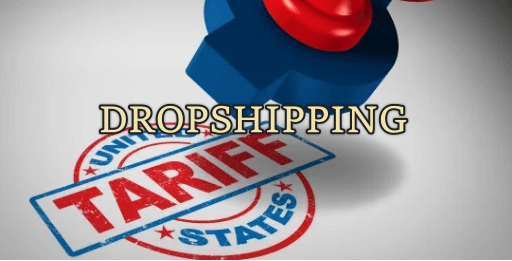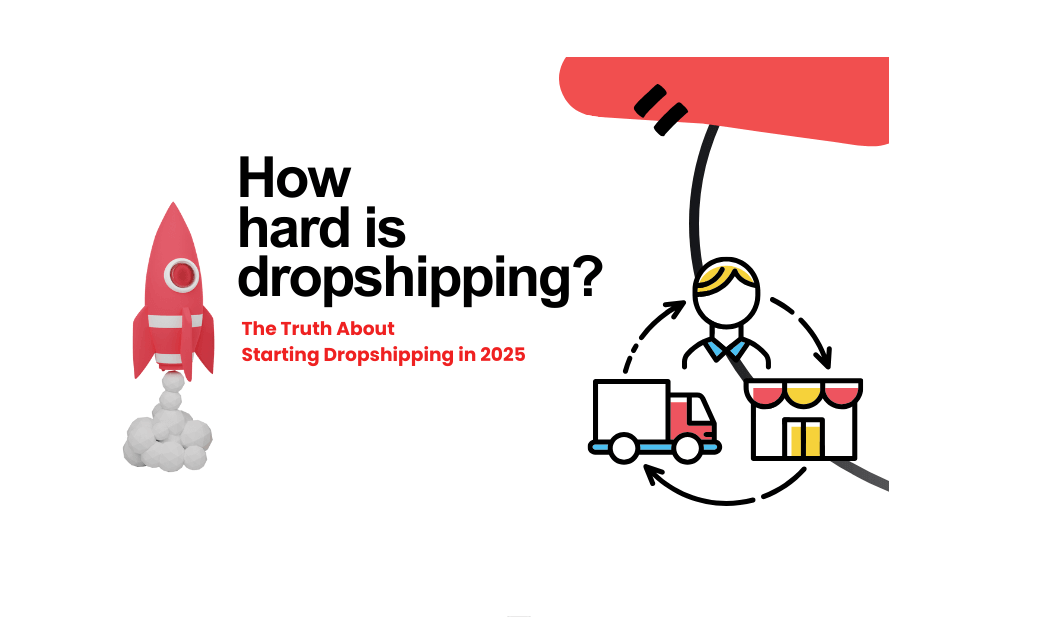The dropshipping sector has grown rapidly in recent years owing to its low entrance barrier and flexibility. For dropshipping suppliers, this is a fantastic chance to interact with eCommerce retailers without the requirement for a physical presence. As a dropshipping provider, you may expand your company by delivering items directly to merchants, who then sell them to customers. This tutorial will help you understand the procedures required to become a dropshipping supplier as well as the main aspects to consider while establishing a competitive advantage in the market.
How to Become a Dropshipping Supplier?
Become a dropship supplier requires a sequence of actions that guarantees your company is ready to satisfy retail demands. From analyzing your company objectives to building effective order fulfillment methods, every action counts for success.
1. Evaluate Your Dropshipping Supplier Goals
Being a dropshipping supplier calls for your company objectives to be crystal defined from beginning. Whether to focus on one product category or grow your company to provide a range of items will be among the first crucial choices you will have to make. Both choices offer benefits and drawbacks; the best one for you will rely on your target market, budget, and resources.
1.1 Particularity in One Product Category
Focusing on a certain product category will enable you to grow to be a master in that area. It can help you to easily monitor quality, strengthen your brand, and provide your consumers originality. If you decide to concentrate on fashion, for instance, you may provide luxury, unique fashion pieces distinct from your rivals. This draws consumers who want premium goods as well as helps you establish confidence with stores.
Focusing on one area also helps you better control product quality, manage inventories, and streamline processes. If you only have to concentrate on one kind of product, you will be more likely to maintain inventories, streamline procedures, and provide stores better after-sale care.
1.2 Multi-category Business
On the other hand, if you decide to enter many product categories, you will have chances to attract a more varied clientele. Providing many items not only satisfies a certain consumer group but also covers many other market demands. This helps you avoid the danger of relying only on one product kind and offers more development possibilities.
Expanding into other categories, however, also calls for increased investments in after-sales, product quality control, and warehouse management. Although this might be more difficult, done correctly it can let you create a flexible and varied brand that satisfies any market need.
2. Products Dropshipped: Quantity, Quality, and Related Certifications
The next critical stage on how to become a dropship supplier will be product selection. In marketing, the product is the most important aspect in convincing clients to pick you. Your items ought to be of great quality and quantity if you want stores to stay with you and provide a wonderful experience for your end clients. This includes making sure the goods satisfy legal and certification criteria in addition to their durability and safety.
2.1 Product Quality
Product quality goes beyond only making sure the items satisfy the safety criteria of every market, durability, free of manufacturing flaws, and so on. Offering premium product helps you establish confidence among stores and keep consumers over the long run. Any flaw may lead to big difficulties like poor reviews, high return rates, and damage of your reputation.
2.2 Product Quantity
Apart from quality, keeping a constant product volume is crucial to satisfy retail demands. You have to make sure you always have adequate inventory to prevent delivery delays or order cancellals, which may badly sour ties in business.
2.3 Relevant Certifications
Your droshipping products may require relevant certifications, such as specific industry certifications, organic certifications, or safety certifications. For example, if a customer selling face masks or sunscreen wants you to be their supplier, you might need to prepare certain certificates. Especially for TikTok Shop product certification requirements are strict.
3. Warehouse: Local or Overseas Warehouse
The dropshipping model depends much on the choice of a warehouse, which directly influences customers shipping costs, and delivery time. Managing a warehouse typically comes with two choices: either a local or an international warehouse. Depending on your desired consumer base and corporate strategy, every alternative offers benefits and drawbacks.
3.1 Domestic Warehouse
To become a dropshipping supplier, especially for big markets like the US, Europe, or Australia, using a home warehouse greatly speeds shipping. Goods kept at a domestic warehouse just need one to three days for delivery, thereby offering a fantastic shopping experience for the final buyer. This reduces the danger of consumers canceling purchases because of extended waiting periods and allows the dropshipping provider to become more dependable.
Furthermore, particularly for goods that need for certain certification documentation, local warehouses help you lower the risk of taxes and complex customs processes. But because local warehouses can cost more than international ones for keeping products, you will have more funds to keep.
3.2 Overseas Warehouses
In terms of cost how to become a dropship supplier, foreign warehouses—especially those in nations with cheap labor and running expenses like China, Vietnam, or India—offer a considerable advantage. Reduced running and storage expenses let you provide goods at more reasonable rates, which draws a lot of stores. You may also use mass manufacturing features concurrently to keep a constant supply.
Nonetheless, depending on the location and shipment method, utilizing overseas warehouses usually comes with extended delivery times—up to 7-30 days. This may lower the customer experience, which would result in either negative final customer ratings or high cancellation rates. Managing customs and taxes may also be more difficult and need for knowledge of import and export policies of every nation.
Your target market and company plan will determine whether local or foreign warehouses are best for you; alternatively, you may mix both to maximize delivery times and cost savings. Using both kinds of warehouses will enable you to remain competitive and be adaptable in your product offers if you want to service consumers in many areas.
4. Order Fulfillment and Automation
Order fulfillment is the customer receiving, processing, and delivery of orders. Ensuring flawless operation of this procedure is very vital for dropshipping suppliers.
Automation systems handling inventory, order processing, and shipping alerts might help you to simplify your operations. For your dropship company, automation offers several benefits.
- Speed up order processing: Automation guarantees consumers get their items on time, speeds order processing, and shortens delivery times.
- Minimize human errors: Automation removes frequent mistakes such incorrect product amounts and entered addresses.
- Optimize inventory management: The system automatically changes inventory in real time, therefore supporting precise product amounts.
- Improve customer experience: Deliver fast and accurately to assist to raise client happiness and reputation.
Tips:
You can learn about order fulfillment and automation tools to complete your orders, like Dropshipman, Dsers, Spocket, etc.
5. Compatibility of Tracking: Tracking Speed and Update
Maintaining supplier confidence and improving the shopping experience in the dropshipping company model depend much on order tracking features. Consumers always want to know the precise status of their orders from the moment of purchase till they arrive. Retaining consumers and stores depends so mostly on the capacity to provide accurate and fast tracking information.
5.1 Update Speed
Tracking possibilities mostly depends on order status update speed. Giving consumers rapid, precise information on the whereabouts of the purchase helps them to relax about the delivery procedure. From the moment the purchase is handled, packed, transported, till it is delivered, the tracking system has to make sure the consumer is instantly informed at every step. Delays in updating might cause discontent, therefore undermining the supplier’s image.
5.2 Comprehensive Tracking
Comprehensive shipping tracking covers not only the present whereabouts of an item but also offers thorough details on expected arrival schedules, shipment routes, and other significant benchmarks like customs or problems. This clarifies the delivery procedure for consumers and stores, therefore fostering openness and confidence. Particularly, the incidence of order complaints will be much lowered when consumers are given thorough and correct information.
6. Invoicing and Payment
Become a dropshipping supplier also required maintaining good rapport with stores depends on seamless invoicing and payment processing. Make sure your system can correctly manage invoicing so that it clearly breaks down expenses including taxes, shipping charges, and product pricing.
To fit varying merchant preferences, also provide credit cards, PayPal, or bank transfers as many payment choices. Simplified and open payment systems guarantees quick payments and help your customers to develop confidence.
7. Return Policy and After-Sales Service
Building confidence and developing a long-term connection between the dropshipping supplier and the client depend much on return policies and after-sales care. Not only does a clear and open return and after-sales policy enhance the purchasing experience but also demonstrates supplier professionalism.
7.1 Return Policy
Establishing a simple, customer-friendly return policy is crucial in the dropship business. Common circumstances include defective, damaged, or mis-described items; without a clear return policy, consumers can lose faith and not return to make another purchase. You must explicitly state the terms of time, product condition, and associated expenses along with a straightforward and easy-to-follow return policy. A flexible policy will help the company to manage end consumer issues.
7.2 After-sales Service
Beyond managing returns, after-sales care covers technical assistance, question answering, and further customer advise after their items have been received. For high-value or specialized items where consumers could need long-term assistance, this is particularly critical. Whether via email, phone, or automated chatbots, a good customer care system can help you keep loyalty and improve brand reputation.
Another approach to create long-lasting after-sales connections is giving current consumers information on new goods, promotions, or unique services. Customers are more likely to return to purchase from you and tell others about you when they feel supported long after their transaction is over.
8. Customer Service
Maintaining a competitive advantage and raising the happiness of stores and customer loyalty depends mostly on customer service, which helps how to become a dropship supplier. Offering tailored services include print on demand (POD) and bespoke packaging helps clients experience something different and personal.
8.1 Custom packaging
Custom packaging not only protects the items but also gives consumers a positive view of the brand. Depending on the retailer’s desire, you may provide personalized packaging with a brand, message, or distinctive design. This enables stores to develop their own brand, boost client awareness and project professionalism.
8.2 Print on demand (POD)
Particularly for clothing, accessories, or customized presents, print on demand is a common service. Retailers may use this service to sell items printed in line with consumer designs without needing to have merchandise on hand. This reduces inventory risks and helps to maximize expenses. This great degree of customizing not only makes the product more distinctive but also draws a lot of possible consumers, particularly those who like originality and personalizing.
Conclusion
Become a dropshipping supplier entails more than simply selling items; it also entails developing a thorough and professional system to fulfill the demands of both merchants and end users. You can create excellent shopping experiences and keep consumers in a competitive market by improving the whole process, from order fulfillment to customer support.
Investing in automation technologies helps to increase job productivity, thus freeing more attention on market growth and product development. Moreover, establishing a clear return policy and committed customer service will help to foster loyalty from clients by means of trust.
Maintaining viability in the dropshipping sector ultimately depends on adaptability to shift in consumer preferences and flexibility. Always pay attention to client comments and change your company plan to not only satisfy but beyond their needs.

![Dropshipping General Store vs. Niche Store [2025 Data and Table]](https://www.dropshipman.com/wp-content/uploads/2025/03/general-vs-niche-store.png)


